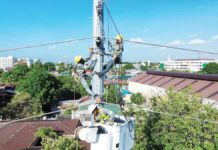[av_one_full first min_height=” vertical_alignment=” space=” custom_margin=” margin=’0px’ padding=’0px’ border=” border_color=” radius=’0px’ background_color=” src=” background_position=’top left’ background_repeat=’no-repeat’ animation=”]
[av_heading heading=’Japan cites Iloilo City as model for disaster prep ‘ tag=’h3′ style=’blockquote modern-quote’ size=” subheading_active=’subheading_below’ subheading_size=’15’ padding=’10’ color=” custom_font=”][/av_heading]
[av_textblock size=” font_color=” color=”]
Wednesday, May 17, 2017
[/av_textblock]
[av_textblock size=” font_color=” color=”]
ILOILO City – This southern city has been cited as model for multi-stakeholder participation in promoting disaster resilience.
“We hope that the Iloilo City community-based disaster preparedness model will be sustained and adopted by other local government units,” said Kazuko Kurashina, director of the Partnership Program Division of the Japan International Cooperation Agency (JICA) Yokohama.
The best practices were presented to 40 officials of Calapan City, Oriental Mindoro who conducted a study tour to the metropolis recently.
Calapan City mayor Arnan Panaligan said they learned significant ideas and they will replicate the same.
Calapan City Disaster Risk Reduction Management Officer (CDRRMO) Nelson Aboboto said they will adopt Iloilo CDRRMO’s best practice such as involving Person with Disabilities (PWDs), dissemination of information and pooling volunteers.
The visiting officials added they will also seek membership with international organizations like what Iloilo City did to create network, linkages and study tours abroad.
Mayor Jed Patrick Mabilog said the increasing interest manifested the city’s growing reputation as benchmark capital and favorite destination for study tours of both public and private sectors.
The pilot community-based disaster preparedness project involving 9,238 residents and vulnerable groups in Iloilo City concluded in March with the support of JICA and Japanese non-profit group CITYNET based in Yokohama.
The city government implemented the program to enhance disaster preparedness and response at the local level while promoting knowledge exchange between Japan and the Philippines.
“Japan and the Philippines share common experiences in disasters since both nations are located on the Pacific Ring of Fire. Given our vulnerability to earthquakes, floods, and other natural disasters, disaster awareness and preparedness are critical at the community level to minimize risks and losses,” said Kurashina.
Calapan officials also visited Barangay Calubihan in Jaro district, a pilot village of Community-Based Adaptation and Resilience Against Disasters (CBARAD) to experience early warning system and related strategies.
They were briefed of KABALAKA which means care or concern in dialect, a volunteer program that involved students and teachers in disaster preparedness advocacy campaigns, during a visit to City Disaster Information and Exhibit Center established at partner school John B. Lacson Foundation Maritime University.
The project also profiled and enjoined vulnerable groups in city such as the persons with disabilities (PWDs), elderly, and children.
Lessons from Japan’s experience on disaster preparedness and recovery were also shared through study visits of City Government to Japan to study crisis management, resilient infrastructure, and collaboration models involving academe, communities, and PWDs.
The KABALAKA gallery, an interactive exhibit featuring disaster preparedness and survival, was also initiated with the help of students who crafted information and education campaign materials.
CBARAD succeeded JICA’s earlier assistance to a flood control project in following the devastation from Typhoon Frank in 2008 which affected about 254,000 people and accounted for millions of damage to the city’s economy.
As part of JICA’s development cooperation assistance to the Philippines since the 1960s, the aid agency has been supporting the country in capacity building of frontline government agencies involved in disaster management, and in building socio-economic infrastructure to mitigate impact of disasters. (Iloilo City PIO/PN)
[/av_textblock]
[/av_one_full]



